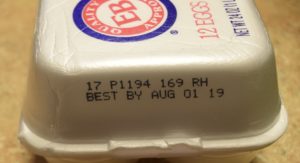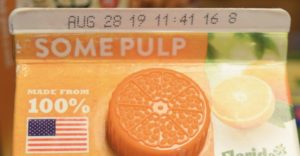Knowing What Label Dates Mean Will Save You Money and Reduce Food Waste
go.ncsu.edu/readext?613119
en Español / em Português
El inglés es el idioma de control de esta página. En la medida en que haya algún conflicto entre la traducción al inglés y la traducción, el inglés prevalece.
Al hacer clic en el enlace de traducción se activa un servicio de traducción gratuito para convertir la página al español. Al igual que con cualquier traducción por Internet, la conversión no es sensible al contexto y puede que no traduzca el texto en su significado original. NC State Extension no garantiza la exactitud del texto traducido. Por favor, tenga en cuenta que algunas aplicaciones y/o servicios pueden no funcionar como se espera cuando se traducen.
Português
Inglês é o idioma de controle desta página. Na medida que haja algum conflito entre o texto original em Inglês e a tradução, o Inglês prevalece.
Ao clicar no link de tradução, um serviço gratuito de tradução será ativado para converter a página para o Português. Como em qualquer tradução pela internet, a conversão não é sensivel ao contexto e pode não ocorrer a tradução para o significado orginal. O serviço de Extensão da Carolina do Norte (NC State Extension) não garante a exatidão do texto traduzido. Por favor, observe que algumas funções ou serviços podem não funcionar como esperado após a tradução.
English
English is the controlling language of this page. To the extent there is any conflict between the English text and the translation, English controls.
Clicking on the translation link activates a free translation service to convert the page to Spanish. As with any Internet translation, the conversion is not context-sensitive and may not translate the text to its original meaning. NC State Extension does not guarantee the accuracy of the translated text. Please note that some applications and/or services may not function as expected when translated.
Collapse ▲According to the USDA Agricultural Research Service, American consumers waste an average of 238 pounds of food every year, or 21 percent of the food they buy, costing an estimated $1,800 per year for each person. The Environmental Protection Agency estimates that more food reaches landfills and incinerators than any other single material in our everyday trash, creating 22 percent of discarded municipal solid waste. The wasted food decays and produces methane gas.
Knowing what label dates mean can reduce food waste, as many consumers throw food out when the date stamped on the package arrives. Most dates are not an indicator of the product’s safety and are not required by federal law. The exception is infant formula and baby food that require a “use by” date for quality and nutrient retention, which must be adhered to for infant health. Most label dates are meant for food quality. There are no uniform or universally accepted descriptions used on food labels. Common practices include:
Milk has a “sell by” date stamped on every carton. It’s best to purchase it before this date. If it remains refrigerated at 40 degrees or less, it should remain fresh up to 7 days beyond the “sell-by” date. If milk smells bad, it’s time to throw it out.
Yogurt has a “sell by” or “best if used by” date for highest quality. If refrigerated correctly, it can be expected to be of good quality 10 days beyond this date.
Eggs usually have a “sell by” date on their carton. If refrigerated, they have a very long shelf life. They are expected to maintain decent quality for 3 to 5 weeks beyond the “sell by” date.
For meat, there are a couple of possible date markings:
“Sell by” date tells the retailer how long to display the product for sale.
“Use by” date is the last date recommended for meat while at peak quality. Freeze meat and poultry if unable to prepare by the “use by” date.
Peanut butter, powdered milk and some canned foods have a “best if used by” or “use by” date on the label. While the product may decline in flavor and quality, the food should be safe after this date.
High-acid canned goods such as tomatoes, fruits and fruit juice can be stored for 12 to 18 months.
Low-acid canned goods such as canned meats, poultry, fish, and vegetables will keep for 2 to 5 years, as long as the cans are in good condition and have been stored in a cool place.
Packing codes appear as a series of letters and/or numbers which might refer to the date or time of manufacture. They are used in case of a recall.
Food waste can also be reduced by surveying what’s on-hand that needs to be eaten before making a menu plan. Shopping with a full stomach and grocery list reduces impulse buying.







